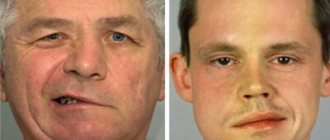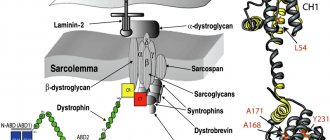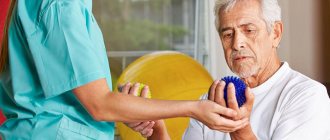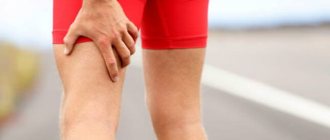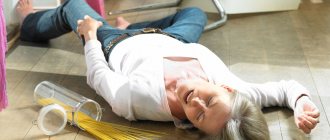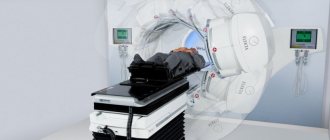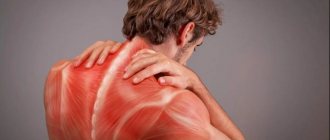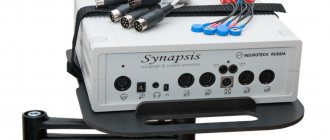|
Almost every unshakable generally accepted theory, which schoolchildren cram with curses and which teachers and even university professors tell tiredly and equally, upon careful examination turns out to be by no means unambiguous, exciting and full of mysteries. The above applies fully to the theory of muscle contraction. In general terms, it was developed back in the 50s of the last century, and the classic drawing (Fig. 1) with actin and myosin filaments still wanders from textbook to textbook. However, the real picture of muscle contraction is much more intricate, interesting and incomprehensible, with many details and unexpected characters and complex roles played by these individuals. A new and amazing branch of science, located at the intersection of physics, mathematics and biology and studying the mechanisms of muscle contraction, was discussed in their lectures at the Future Biotech Winter School, held with the support of RVC, the Dynasty Foundation and the Russian Foundation for Basic Research, and Doctor of Biological Sciences, Head of the Laboratory of Biological Motility of the Institute of Immunology and Physiology, Ural Branch of the Russian Academy of Sciences, Sergei Yurievich Bershitsky.
Neuromuscular response to strength training[edit | edit code]
Source: "Training Programs"
, scientific ed.
Author:
Prof. Dr. Tudor Bompa, 2021
Muscle structure[edit | edit code]
Muscle
is a complex structure responsible for movement.
Muscles are composed of sarcomeres, which contain a specific combination of fibrillar proteins - myosin (thick filaments) and actin (thin filaments), which play an important role in muscle contractions. Thus, a sarcomere
is a contractile element of muscle fiber, consisting of myosin and actin protein filaments.
In addition, the ability of a muscle to contract and exert force depends specifically on its type, cross-sectional area, and the length and number of fibers within the muscle. Fiber number is determined by genetics and cannot be influenced by training; however, training can change other variables. For example, the number and thickness of myosin filaments increases through rigorous training with maximum strength load. Increasing the thickness of muscle filaments increases muscle size and contraction strength.
The human body is made up of different types of muscle fibers, divided into groups, and each group belongs to one motor unit. Overall, our body contains thousands of motor units containing tens of thousands of muscle fibers. Each motor unit contains hundreds or thousands of muscle fibers that remain at rest until they need to act. The motor unit controls a set of fibers and directs their actions according to the “all or nothing” law. This law means that when a motor unit is stimulated, the impulse sent to its muscle fibers either spreads completely - thus irritating the entire set of fibers - or does not spread at all.
Different motor units respond to different training loads. For example, performing a bench press at 60% RM recruits a specific set of motor units, whereas larger motor units wait for a higher load. Since the sequential recruitment of motor units depends on the load, it is necessary to develop special programs to activate and adapt the main groups of motor units and muscle fibers that play a dominant role in the chosen sport. For example, training for short distance sprints and track and field events (such as shot put) should use heavy loads to help develop the strength needed to optimize speed and explosiveness.
Muscle fibers perform different biochemical (metabolic) functions; More specifically, some are better physiologically adapted to work under anaerobic conditions, while others work better under aerobic conditions. Fibers that use oxygen to produce energy are called aerobic, type I, red, or slow fiber. Fibers that do not require oxygen are called anaerobic, type II, white, or fast. Fast-twitch muscle fibers, in turn, are divided into subtypes IIA and IIX (sometimes called IIB, although type IIB is almost never found in humans [1]).
Slow and fast fibers exist in approximately equal proportions. However, depending on their function, some muscle groups (eg, hamstrings, biceps) contain more fast-twitch fibers, while others (eg, soleus) contain more slow-twitch fibers. In Table 2.1 we compare the characteristics of fast and slow fibers.
Comparison of fast and slow fibers
| SLOW FIBERS | FAST FIBER |
| Red, type I, aerobic | White, type II, anaerobic |
| • Slowly get tired • Nerve cell is smaller - innervates from 10 to 180 muscle fibers • Develop long, sustained contractions. • Used to develop endurance • Activated during low- and high-intensity activities | • Get tired quickly • Large nerve cell - innervates 300 to 500 (or more) muscle fibers • Develop short, strong contractions • Used to develop speed and strength • Activated only during high-intensity activities |
Training can influence these characteristics. Danish scientists Andersen and Aagaard [2][3][4][5][6] in their studies show that with volume loads or lactate-inducing training, IIX fibers acquire the characteristics of IIA fibers. That is, the myosin-rich chain of these fibers becomes slower and copes with lactate activity more effectively. These changes can be reversed by reducing the training load (tapering), causing IIX fibers to return to the original characteristics of the fastest fibers[3]. Strength training also increases fiber size, which produces more force.
The contraction of a fast motor unit is faster and more powerful than the contraction of a slow motor unit. As a result, the proportion of fast-twitch fibers tends to be higher in successful speed-strength athletes, but they also fatigue more quickly. Athletes with higher slow-twitch fibers, on the other hand, tend to excel in endurance sports because they can perform low-intensity activities for longer periods of time.
Activation of muscle fibers occurs according to the principle of magnitude, also known as Henneman's principle[7], according to which motor units and muscle fibers are activated from smaller to larger. Activation always begins with slow fibers. During low- to moderate-intensity exercise, the slow-twitch fibers are activated and do most of the work. Under heavy load, the slow fibers contract first, then the fast fibers are involved in the process. During repetitions to failure with a moderate load, fast-twitch fiber motor units are gradually activated to maintain force production while previously recruited motor units become fatigued (see Figure 1).
rice. 1. Sequential activation of motor units in a set of exercises until concentric failure
There may be differences in the distribution of muscle fiber types among athletes participating in different sports. This is illustrated in Fig. 2 and 2.3, representing the total percentage of fast and slow muscle fibers in athletes in selected sports. For example, the significant difference between sprinters and marathon runners makes it clear that success in some sports is at least partially determined by the genetic composition of the athlete's muscle fibers.
rice. 2. Distribution of fiber types in men in different sports. Note the predominance of slow fibers in athletes involved in aerobic sports and the predominance of fast fibers in athletes involved in speed-strength sports
Therefore, the peak power produced by athletes also relates to the distribution of fiber types—the higher the percentage of fast-twitch fibers, the more power the athlete produces. The percentage of fast-twitch fibers also relates to speed: the faster an athlete's speed, the higher the percentage of fast-twitch fibers they have. Such people make excellent sprinters and jumpers, and such natural talent should be channeled into speed-strength sports. Trying to train them for, say, distance running is a waste of talent; in such disciplines they will have only average success, while they can become excellent sprinters, baseball players or football players (the list of speed-strength sports does not end there).
rice. 3. Distribution of fiber types in women in different sports
Roll and lock: turn and lock
According to the lever hypothesis, in muscle contraction there is only one moment of force generation - when the myosin tail (lever) turns. However, some data from radiography and tomography of muscles not only do not agree with this theory, but indicate that there is still some incomprehensible moment in muscle contraction that the lever hypothesis does not explain. Therefore, a group of researchers led by A.K. Tsaturyan proposed a theory of muscle contraction called “Roll and lock” (see: Michael A. Ferenczi et al., 2005. The “Roll and Lock” Mechanism of Force Generation in Muscle). According to this theory, myosin heads sit on actin even before ATP hydrolysis, and they sit not in a slender and organized manner, but at random. On the myosin head there is a long protruding domain - a “probe” - which “gropes” for a suitable (acidic and negatively charged) part of the actin filament and sticks to it - as necessary, at the first angle that comes along. However, as soon as ATP hydrolysis occurs, myosin changes its conformation, the heads rotate at the desired angle and firmly and clearly, like a key with a lock, adhere to the actin filament, and phosphate is released from the myosin pocket. And only after this the lever turns. In other words, the model turns out to be two-stage: at the first stage, the myosin head firmly and clearly clings to the actin and at the same time rotates slightly, and at the second, the lever turns, and the force that will then lead to muscle movement is generated at both of these stages.
In addition to X-ray structural and tomographic data, which are in very good agreement with the “Roll and lock” theory, there are several indirect, but very beautiful evidence of its correctness. For example, it is known that during muscle contraction, if the muscle does not change its length, only a little more than 40% of the myosin heads sit on actin, and the rest dangle unattached to anything. However, when a contracted muscle is forcibly stretched (for example, this happens when running, when a person lands on a tense muscle), the stiffness of the muscle increases sharply due to the fact that almost all the free myosin heads are sharply coupled to the actin filament. However, judging by the X-ray diffraction data, they do not interlock “tightly”, like a key with a lock, but simply haphazardly. This can be explained using the “Roll and lock” theory. ATP hydrolysis stops when a muscle is stretched (this is understandable: what is the point of wasting ATP if the work is not done by the muscle
, but
above the muscle
), and all myosin heads go into a state of “active actin search” - their protruding probe searches for the actin filament, feels for a suitable place on it and adheres to it - not firmly, not like a key with a lock, but haphazardly . However, in order to increase the stiffness of the muscle (and thereby protect the bones from fracture), this is enough.
The mechanism of muscle contractions[edit | edit code]
As we described earlier, muscle contractions
occur as a result of a chain of events involving protein filaments - myosin and actin. Myosin filaments contain crossbridges—tiny bridges that extend laterally toward the actin filaments. The excitation leading to contraction stimulates the entire fiber, creating chemical changes that allow actin filaments to connect to myosin cross bridges. The binding of myosin to actin via cross-bridges releases energy, which causes the cross-bridges to rotate, thereby pulling up or performing a sliding motion linking the myosin filaments to the actin filaments. This sliding motion causes muscle contraction, which produces force.
To visualize this differently, imagine a rowing boat. The paddles are myosin filaments, and the waters are actin filaments. When the oars hit the water, the boat is pulled forward with force - and the more oars in the water, the greater the physical strength of the rower, the greater the force generated. Increasing the number and thickness of myosin filaments similarly increases force production.
The sliding filament theory described earlier provides insight into how muscles work to produce force. This theory includes mechanisms that promote efficient muscle contractions. For example, elastic energy release and reflex adaptation play a key role in optimizing athletic performance, but such adaptation only occurs when the correct stimulation occurs during training. For example, an athlete's ability to use stored energy to jump higher or throw a shot further is optimized through explosive movements like those used in plyometric training. However, muscle components—such as elastic components (including tendons, muscle fibers, and cross bridges)—cannot transport energy efficiently unless the athlete strengthens parallel elastic components (such as ligaments) and collagen structures (which provide stability and protect from injuries). If the body is to withstand the forces and impacts an athlete is exposed to in order to optimize the elastic qualities of the muscles, anatomical adaptation must precede strength training.
Reflex
is an involuntary muscle contraction caused by an external stimulus[8]. The two main components of reflex control are the muscle spindles and the neurotendon spindle. Muscle spindles respond to the magnitude and rate of muscle stretch[9], while the neurotendon spindle (which is located at the junction of muscle fibers with tendon bundles[8]) responds to muscle tension. When a muscle develops a high degree of tension or stretch, the muscle spindles and neurotendon spindle involuntarily relax the muscle to protect it from damage and injury.
When these inhibitory reactions are suppressed, athletic performance increases. The only way to achieve this is to adapt the body to a higher degree of tension, which increases the threshold for activation of reflexes. This adaptation can be achieved through strength training using progressively heavier loads (up to 90 percent of your rep max or even higher), thereby forcing the neuromuscular system to tolerate higher stress by continually recruiting more fast-twitch fibers. Fast-twitch fibers produce more protein, which helps increase strength.
All sports movements are performed according to a motor model called the stretch-shorten cycle and is characterized by three main types of contraction: eccentric (lengthening), isometric (static position) and concentric (shortening). For example, a volleyball player who quickly squats and immediately jumps up to block an attacking blow has completed the entire stretch-contraction cycle. The same applies to the athlete who lowers the barbell to his chest and quickly performs an explosive movement by extending his arms. To fully take advantage of the physiological qualities of the stretch-shorten cycle, the muscle must quickly move from lengthening to shortening [10] (Schmidtble-icher, 1992).
Muscle potential is optimized when all the complex factors that influence the stretch-shorten cycle are activated. Their influence can only be used to improve athletic performance when the neuromuscular system is strategically stimulated in the correct sequence. It is to achieve this goal that periodization of strength training bases the planning of stages on the physiological basis of the chosen sport. After compiling an ergogenic profile (assessing the contribution of energy systems) of the chosen sport, it is necessary to plan the stages of training step by step in order to transfer positive neuromuscular adaptation to practical indicators of human activity. Thus, understanding applied human physiology and establishing a goal at the end of each phase helps coaches and athletes integrate physiological principles into specific sport training.
Let's repeat:
The musculoskeletal system of the body is a combination of bones attached to each other by ligaments at the joints. The muscles that cross these joints provide the force to move the body. However, skeletal muscles do not contract independently of each other. The movements performed around a joint are produced by several muscles, each of which has a specific role, as mentioned above.
Agonists—or synergists—are muscles that interact with each other to perform a movement. In most cases, especially if we are talking about a skilled and experienced athlete, the antagonist muscles relax, making movement easier. Because the interaction of the agonist and antagonist muscle groups directly influences athletic movements, improper interaction between these groups can result in jerky or stiff movement. Therefore, the smoothness of muscle contraction can be improved by focusing on relaxing the antagonists.
For this reason, simultaneous contraction (simultaneous activation of agonist and antagonist muscles to stabilize the joint) is recommended only in the early stages of rehabilitation after injury. A healthy athlete, especially if he is involved in strength sports, does not need to perform exercises (for example, on an unstable surface) that cause simultaneous contractions. For example, one of the main characteristics of elite sprinters is very low myoelectric activity of antagonist muscles in each phase of the stride cycle[11].
Primary muscles are primarily responsible for joint action, which is part of volumetric force movement or technical ability. For example, during elbow flexion (biceps curl), the primary muscle is the biceps muscle, while the triceps muscle (triceps) acts as an antagonist and must be relaxed to allow unimpeded action. In addition to this, stabilizers, or anchors (usually smaller muscles), contract isometrically to anchor the bone so that the primary muscles have a strong base from which to begin pulling. Muscles of other limbs can also take part in this, acting as stabilizers, allowing the primary muscles to perform the necessary movements. For example, when a judoka pulls an opponent toward him by holding his judogi, the muscles of his back, legs, and abdomen contract isometrically to provide a stable base for the action of the elbow flexors (biceps), shoulder extensors (rear deltoids), and scapular adductors and depressors (trapezius). and latissimus dorsi).
Video illustrations:
Video illustration of the lever hypothesisMyosin clings to the actin filament, grabs onto it, turns the tail, then unhooks and returns the tail to its previous position. Video by Kenneth Holmes. |
Video illustration of the “Roll and lock” hypothesisMyosin first looks for a suitable position on the actin filament, then weakly connects to it, then adheres tightly - in this case, the entire head turns and develops some force, and only then the tail turns. Video by Mary Reedy. |
Mechanics of muscle contractions[edit | edit code]
Source: “Sports Diagnostics”
Author:
Professor V.P. Guba, 2021
If a muscle is stimulated with a short electrical impulse, after a short latent period it contracts. This contraction is called a “single muscle contraction.” A single muscle contraction lasts about 10-50 ms, and it reaches maximum strength after 5-30 ms.
Each individual muscle fiber obeys the “all or nothing” law, i.e., when the force of stimulation is above a threshold level, a complete contraction occurs with the maximum force for a given fiber, and a stepwise increase in the force of contraction as the force of stimulation increases is impossible. Since the mixed muscle consists of many fibers with different levels of sensitivity to excitation, the contraction of the entire muscle can be stepwise depending on the strength of irritation, with strong irritations activating deeper muscle fibers.
Filament sliding mechanism[edit | edit code]
rice.
1. Scheme of the formation of cross-links - the molecular basis of sarcomere contraction Muscle shortening occurs due to the shortening of the sarcomeres that form it, which, in turn, are shortened due to the sliding of actin and myosin filaments relative to each other (and not the shortening of the proteins themselves). The theory of filament sliding was proposed by scientists Huxley and Hanson (Huxley, 1974; Fig. 1). (In 1954, two groups of researchers - H. Huxley with J. Hanson and A. Huxley with R. Niedergerke - formulated a theory explaining muscle contraction by the sliding of threads. Independently of each other, they found that the length of the A disk remained constant in relaxed and shortened sarcomere. This suggested that there are two sets of filaments - actin and myosin, and one fits into the spaces between the others, and as the length of the sarcomere changes, these filaments somehow slide over each other. This hypothesis is now accepted by almost everyone.)
Actin and myosin are two contractile proteins that are capable of entering into a chemical interaction, leading to a change in their relative position in the muscle cell. In this case, the myosin chain is attached to the actin filament using a number of special “heads”, each of which sits on a long springy “neck”. When coupling occurs between the myosin head and the actin filament, the conformation of the complex of these two proteins changes, the myosin chains move between the actin filaments, and the muscle as a whole shortens (contracts). However, in order for a chemical bond between the myosin head and the active filament to form, it is necessary to prepare this process, since in a calm (relaxed) state of the muscle, the active zones of the actin protein are occupied by another protein - tropochmyosin, which does not allow actin to interact with myosin. It is in order to remove the tropomyosin “cover” from the actin filament that a rapid pouring of calcium ions from the cisterns of the sarcoplasmic reticulum is required, which occurs as a result of the action potential passing through the muscle cell membrane. Calcium changes the conformation of the tropomyosin molecule, as a result of which the active zones of the actin molecule open for the attachment of myosin heads. This connection itself is carried out with the help of so-called hydrogen bridges, which very tightly bind two protein molecules - actin and myosin - and are able to remain in this bound form for a very long time.
To detach the myosin head from actin, it is necessary to expend adenosine triphosphate (ATP) energy, while myosin acts as an ATPase (an enzyme that breaks down ATP). The breakdown of ATP into adenosine diphosphate (ADP) and inorganic phosphate (P) releases energy, breaks the connection between actin and myosin, and returns the myosin head to its original position. Subsequently, cross-links can again form between actin and myosin.
In the absence of ATP, actin-myosin bonds are not destroyed. This is the cause of rigor mortis after death, because the production of ATP in the body stops - ATP prevents muscle rigidity.
Even during muscle contractions without visible shortening (isometric contractions, see above), the cross-linking cycle is activated, the muscle consumes ATP and produces heat. The myosin head is repeatedly attached to the same actin binding site, and the entire myofilament system remains motionless.
Attention
: The contractile muscle elements actin and myosin by themselves are not capable of shortening. Muscle shortening is a consequence of the mutual sliding of myofilaments relative to each other (filament sliding mechanism).
How does the formation of cross-links (hydrogen bridges) translate into movement? A single sarcomere shortens by approximately 5-10 nm per cycle, i.e. approximately 1% of its total length. By quickly repeating the cross-link cycle, shortening of 0.4 µm, or 20% of its length, is possible. Since each myofibril consists of many sarcomeres and cross-links are formed in all of them simultaneously (but not synchronously), their total work leads to a visible shortening of the entire muscle. The transmission of the force of this shortening occurs through the Z-lines of myofibrils, as well as the ends of the tendons attached to the bones, resulting in movement in the joints through which the muscles move in space parts of the body or advance the entire body.
Leverage hypothesis
Now it’s time to understand in more detail what happens to myosin during muscle contraction. Let's start with the currently accepted theory known as the Leverage Hypothesis.
Let's take a closer look at the myosin molecule (and more specifically, myosin II, the most convenient for research, Fig. 7). It is clear that there must be at least two important places in the myosin head - one that grabs actin, and the second that ATP gets into. Researchers working with myosin cleverly called the “actin” region of the head the “mouth” and the “ATP” region the “pocket.” And the perturbations that occur with myosin can be described with a rather crude expression: “close your mouth and keep your pocket wider.”
|
The fact is that in order for the ATP pocket to open and ATP to enter it, the actin mouth must be closed (that is, the myosin must sit on the actin): the closed upper jaw of the mouth pulls back the pocket flap, and it opens. ATP fits into the wide open pocket.
And this is where the fun begins. ATP hydrolysis can only occur in a closed pocket, and in order for the pocket to close, the mouth must open—that is, the myosin must fall off the actin. But that is not all. To ensure hydrolysis, the surroundings of the pocket must rearrange and move slightly. By shifting, the peripocket regions cause small changes in neighboring regions, which, in turn, lead to the fact that the rigid domain of myosin, called the “converter,” is thrown from one stable position to another and pulls the myosin tail with it, deflecting it by as much as 60°. The hammer is cocked.
Now the next act begins. Myosin, with a pocket filled with ADP and phosphate, must necessarily cling to actin and close its mouth, because otherwise it is not able to spit out phosphate (that is, purely theoretically, it will spit it out someday, but very soon; therefore, myosin is, in fact, , actin-dependent ATPase). Myosin first weakly binds to actin through electrostatic interactions, and then the process of closing the mouth is initiated. It happens like this. As a result of conformational changes, the myosin head unfolds towards the actin filament in such a way that, firstly, it forms a contact that is very large in area (more than 18 nm2!), and secondly, myosin adheres to two actin molecules at once using hydrophobic and electrostatic interactions, as a result of which the affinity of myosin for actin is a thousand times higher than during the first connection.
So, myosin spits out phosphate and, tightly clinging to actin, undergoes reverse conformational changes - its tail “shoots” and moves relative to the head. This occurs simultaneously on many myosin molecules and therefore leads to the movement of the actin filament relative to the myosin filament, and therefore to muscle contraction. The ADP is then ejected from the pocket. Myosin remains attached to actin; his mouth is closed - even locked! - tightly, tightly, and if the cell is dead and all the ATP in it has already run out, then at this sad moment the story ends, myosin and actin remain forever in a locked, frozen state, and the body begins to experience rigor mortis. A more optimistic scenario, typical for a living cell with a substantial supply of ATP, assumes that a new ATP molecule fits into the pocket (which, as we remember, the head with the closed mouth holds wider), the mouth opens, myosin unsticks from actin and the cycle repeats again.
The relationship between sarcomere length and the strength of muscle contractions[edit | edit code]
rice.
2. Dependence of the force of contractions on the length of the sarcomere. Muscle fibers develop the greatest force of contractions at a length of 2-2.2 microns. With strong stretching or shortening of the sarcomeres, the force of contraction decreases (Fig. 2). This dependence can be explained by the mechanism of filament sliding: at a given sarcomere length, the overlap of myosin and actin fibers is optimal; with greater shortening, the myofilaments overlap too much, and with stretching, the overlap of myofilaments is not sufficient to develop sufficient contractile force.
The effect of stretching on the strength of contractions: stretch curve at rest[edit | edit code]
rice.
4. The effect of pre-stretching on the force of muscle contraction. Pre-stretching increases muscle tension. The resulting curve describing the relationship between muscle length and the force of its contraction when exposed to active and passive stretching demonstrates a higher isometric tension than at rest. An important factor influencing the force of contraction is the amount of muscle stretch. Pulling the end of a muscle and pulling on the muscle fibers is called passive stretching. The muscle has elastic properties, however, unlike a steel spring, the dependence of tension on stretch is not linear, but forms an arcuate curve. As the stretch increases, the muscle tension also increases, but up to a certain maximum. The curve describing this relationship is called the resting stretch curve.
.
This physiological mechanism is explained by the elastic elements of the muscle - the elasticity of the sarcolemma and connective tissue, located parallel to the contractile muscle fibers.
Also, during stretching, the overlap of myofilaments on each other changes, but this does not affect the stretch curve, since at rest, cross-links between actin and myosin are not formed. Pre-stretching (passive stretching) is added to the force of isometric contractions (active contraction force).
Architecture of human skeletal muscles
1.1. Muscle classification
There are different classifications of skeletal muscles: by shape and size, by direction of fibers, by function, in relation to joints.
Classification according to the direction of muscle fibers
For the limbs, the fusiform and pennate muscles are most typical. If the fibers run parallel to the longitudinal axis of the muscle, it is called fusiform. If the muscle fibers are located at an angle to the longitudinal axis of the muscle, it is called pennate.
Due to the existence of muscles with different courses of muscle fibers, the concepts of anatomical and physiological diameters have been established in the anatomy, physiology and biomechanics of muscles.
If we cut a muscle in a plane perpendicular to the line connecting its beginning and end (the length of the muscle), and measure the area of the resulting figure (the cross-sectional area of the muscle), we will obtain the value of the anatomical diameter.
If you make a section of the muscle in a plane perpendicular to the course of the muscle fibers and measure the area of the resulting figures, then the sum of the areas will characterize the value of the physiological diameter of the muscle.
The anatomical diameter of the fusiform muscle coincides with its physiological diameter, while the physiological diameter of the pennate muscle is larger than the anatomical one.
Classification by number of heads
Some muscles have several heads. Such muscles are called biceps, triceps, etc., according to the number of heads.
Classification of muscles according to their relationship to joints
Muscles are divided into groups according to their relationship to joints. Single-joint muscles act on one joint. If a muscle spans two or more joints, it is called biarticular or multijoint.
I recommend paying attention to the textbooks “Muscle Biomechanics” and “Human Skeletal Muscle Hypertrophy”
Near a biaxial joint, the muscles are grouped according to its two axes of movement (flexion - extension, adduction - abduction). To the ball-and-socket joint, which has three axes of movement, muscles are adjacent to several sides and act on it in different directions. For example, the shoulder joint has flexor and extensor muscles that perform movements around the frontal axis, abductor and adductor muscles around the sagittal axis, and rotator muscles around the longitudinal axis.
Classification of muscles according to their function
Depending on the function, synergist and antagonist muscles are distinguished. Typically, two or more muscles act on each joint in the same direction. Such muscles that are friendly in the direction of action are called synergists. Muscles that act on a joint in the opposite direction (flexors and extensors) are antagonists.
Classification of muscles according to the characteristics of attachment and function performed
P.F. Lesgaft (1905) proposed a classification of muscles depending on their morphometric characteristics P.F. Lesgaft distinguished between strong muscles and dexterous muscles. He wrote: “...muscles that are predominantly strong begin and attach to large surfaces, moving away as the surface of attachment increases from the support of the lever on which it acts; The physiological diameter of such muscles is relatively small, despite the fact that they can exhibit great strength with little tension, which is why they do not tire so easily. They act predominantly with their entire mass and cannot produce small shades when moving; They exhibit their strength at a relatively low speed and most often consist of short muscle fibers. Muscles of the second type, distinguished by dexterity in their actions, originate and are inserted on small surfaces, close to the support of the lever on which they act; their physiological diameter is relatively large, they act with great tension, are more likely to get tired, most often consist of long fibers and can act in their individual parts, producing various shades of movements. These will be muscles that allow mainly dexterous and quick movements.”
1.2. Muscle macrostructure
The main structural elements of skeletal muscle are muscle fibers and connective tissue elements that perform auxiliary functions in the muscle.
Muscle fibers united in bundles form the muscle belly, which turns into a tendon. The endings of muscle fibers are “specialized” in transmitting force to the tendon. The muscle fibers narrow significantly as they approach the tendon, and their diameter decreases by almost 90%. The narrowing of the fibers gives the muscle belly its typical fusiform shape. There are folds at the end of each fiber. They ensure the distribution of contractile force over a larger area, thereby reducing the load on the fiber surface. In addition, the transmission of force at an angle causes a shear load on adjacent structures.
Tendons consist of dense fibrous connective tissue, rich in collagen fibers, are formed as a continuation of intramuscular connective tissue elements and are woven into the periosteum. The tendon is covered on the outside with a sheath of dense fibrous connective tissue. Blood vessels and nerves pass through the connective tissue layers. The tendon has little extensibility, has considerable strength and can withstand enormous loads. The mechanical properties of the tendon will be discussed in more detail in the third lecture.
Skeletal muscles have certain characteristics of attachment to bones. The proximal part of the muscle starts from one bone - this is the beginning of the muscle. The distal end - the tendon - is attached to another bone - this is the attachment of the muscle. When a muscle contracts, one end remains motionless (fixed point), the other changes its position (moving point). Sometimes the fixed and moving points change places.
Connective tissue membranes. A transverse section of the muscle belly indicates its complex structure. Outside, the muscle is surrounded by dense connective tissue - epimysium. The epimysium consists of bundles of collagen fibers. By cutting the epimysium, you can see bundles of muscle fibers, as if “wrapped” in a sheath of connective tissue. This connective tissue membrane is called perimysium. The perimysium is also quite dense and relatively thick. By cutting the perimysium, you can see individual muscle fibers surrounded by loose connective tissue. This shell is called endomysium (Fig. 1.1).
Rice. 1.1. Connective tissue structures of muscle (V.S. Gurfinkel, Yu.S. Levik, 1985): 1 – perimysium; 2 – endomysium, 3 – epimysium
Fascia is a connective tissue sheath for muscles. They separate muscles from each other, create support for the muscle during its contraction, and serve as a starting point for some muscles.
The structure of the fascia depends on the functions of the muscles, the pressure that the muscles exert on the fascia during their contraction. In those places where the muscles work a lot, the fascia is well developed, dense, reinforced by tendon fibers and in appearance resembles a thin, wide tendon (fascia lata of the thigh, fascia of the leg).
Functions of connective tissue
1. During development, connective tissue acts as a framework (soft muscle skeleton) on which muscle fibers are fixed. After muscle development is completed, connective tissue continues to hold them together and largely determines the structure of the muscle belly.
2. In the perimysium there are channels for blood vessels and nerves serving muscle fibers.
3. Connective tissue resists passive stretching of the muscle and ensures such a distribution of forces in which the likelihood of damage to muscle fibers is minimized. In addition, the elastic property caused by elastin fibrils and collagen bundles allows the abdomen to restore its shape after the removal of passive forces.
4. Through the endomysium, part of the force developed by the muscle fiber is transferred to the tendon.
1.3. Muscle microstructure
Let us consider in detail the structure of the main structural element of muscle - muscle fiber.
Striated (skeletal) muscle is formed by muscle fibers located parallel to each other, with a length of 4 cm or more and a thickness of up to 0.1 mm. Each fiber has a cylindrical shape, covered with two membranes: the basement membrane and the sarcolemma. Between the sheaths of the muscle fiber are satellite cells. Inside, the fiber is filled with gel-like contents - sarcoplasm. The sarcoplasm contains: myofibrils, nuclei, mitochondria, ribosomes, lysosomes, etc. Each myofibril is surrounded by the sarcoplasmic reticulum like a clutch. It contains Ca2+ ions. Sarcolasma also contains the protein myoglobin, which, like hemoglobin, can bind 02. Depending on the amount of myoglobin in the muscle fibers, the so-called red and white muscle fibers are distinguished.
Myofibrils are the main contractile elements of muscles. Their appearance can be compared to a bamboo stem. The long sections are sarcomeres, and the spaces between them are Z-disks, Fig. 1.2.
Rice. 1.2. Scheme of the structure of myofibril
1.4. Sarcomere structure
The section of myofibril between the two Z-discs is called a sarcomere. Thin filaments extend to both sides of the Z-disc, and thick filaments are located in the middle of the sarcomere. In certain areas of the sarcomere, thick and thin filaments overlap. This area corresponds to a dark disk, while in the area of the light disk there are only actin filaments. The middle part of the dark disk is lighter; it is called the H zone, and, in turn, is divided in two by the M line, which divides the myosin filaments into two equal parts. A cross-section of a myofibril shows that six thin filaments are arranged in a honeycomb around one thick filament. However, there are many such hundreds in the sarcomere. Calculations show that one sarcomere with a diameter of 1 μm contains 1261 thick filaments and 5292 thin filaments. As the sarcomere area increases, the ratio of the number of thin filaments to the number of thick filaments decreases from 12 (12 thin filaments to one thick) to 4.19 (5292 thin to 1261 thick) if the sarcomere diameter reaches 1 μm.
Structure of thick filament
The main structural element of the thick filament is the protein myosin. The myosin molecule consists of two parts: a long rod-shaped section (“tail”) and a globular section attached to one of its ends, which is represented by two identical “heads.” Myosin molecules are located in a thick filament in such a way that the heads are regularly distributed along its entire length, except for a small middle section where they are not present (“bare” zone), Fig. 1.3.
Rice. 1.3. Structure of thick filament (V.L. Bykov, 1998)
Thin filament structure
Each thin filament is formed by two helical strands of actin molecules twisted around one another and two auxiliary proteins tropomyosin and troponin. Both auxiliary proteins (tropomyosin and troponin) suppress the interaction of actin with myosin in the absence of calcium ions, Fig. 1.4.
Rice. 1.4. Thin filament consisting of actin, tropomyosin and troponin molecules (J.H. Wilmore, D.L. Costill, 1997)
1.5. Sliding thread theory
The way skeletal muscle fibers contract was determined by two different studies conducted in the early 1950s by scientists Andrew and Hugh Huxley. While Hugh Huxley was conducting his research with an electron microscope, Andrew Huxley was using an interference microscope to study the characteristics of frog muscle fibers during contraction and relaxation. He found that during contraction, the light disk became shorter, while the length of the dark disk did not change; at the same time, the pale H-zone in the dark disk narrowed and could disappear altogether. Both scientists independently hypothesized that their results could be explained by the sliding movement of actin and myosin filaments relative to each other. The theory of filament sliding is generally accepted today. Briefly, its essence is as follows.
It has been established that during contraction (shortening) of the sarcomere, the length of the thin and thick filaments does not change. In this case, an invariable feature of contraction is the central position of the thick filament in the sarcomere, in the middle between the Z-discs. When a nerve impulse arrives along the axon of a motor neuron, the nerve endings release a neurotransmitter - acetylcholine, which “binds” to the receptors of the sarcolemma. If there is enough of it, the electrical charge is transmitted along the entire length of the muscle fiber. This process is called action potential development. In addition to depolarizing the muscle fiber membrane, the electrical impulse travels through the fiber's network of tubules (T-tubules and sarcoplasmic reticulum) into the interior of the cell. The arrival of an electrical impulse leads to the release of a significant amount of Ca2+ ions into the sarcoplasm. It should be noted that the concentration of Ca2+ ions in the sarcoplasmic reticulum is higher than in the sarcoplasm. After this, Ca2+ ions bind to troponin, which begins the contraction process by “lifting” tropomyosin molecules from the active sites of actin filaments.
Myosin is inactive at rest, since its head contains a negatively charged Mg-ATP complex, which does not allow the protein to exhibit ATPase properties. After the arrival of Ca2+ ions, the charge on the head is neutralized, which leads myosin to an excited state. After this, the myosin heads begin to attach to the active sites of the thin filament.
When the myosin head of a thick filament attaches to a thin filament, a cross bridge is formed between the thick and thin filaments. When interacting with actin, each myosin molecule hydrolyzes up to 10 ATP molecules every second. Due to the energy released during the breakdown of ATP, the myosin head rotates, which leads to the sliding of the thick and thin filaments relative to each other. At the end of the stroke (turn), a new ATP molecule attaches to the myosin head, causing the head to detach from actin and attach to a new active site of the thin filament until the myosin heads reach the Z-disc. Since the distance between the Z-disks decreases when the sarcomere contracts, its length decreases. The simultaneous contraction of all sarcomeres leads to a decrease in the length of the myofibril and muscle fiber. Due to the fact that the sarcomere is not a flat, but a three-dimensional structure, when it contracts, not only does its length decrease, but also its cross-section increases (when thin threads are drawn into thick ones), the cross-section of muscle fibers and the entire muscle. Fig. 1.5.
Rice. 1.5. Diagram illustrating the interaction of thick and thin filaments (L. Strayer, 1985)
The cessation of the nerve impulse leads to the breakdown of acetylcholine and the rupture of cross bridges between actin and myosin. Thanks to the action of the “calcium pump,” Ca2+ ions return to the sarcoplasmic reticulum, actin and myosin are inactivated, and the sarcomere length returns to its original value. The muscle relaxes. Muscle contraction can continue until calcium ion reserves are depleted. They are then pumped back into the sarcoplasmic reticulum via an active “calcium pump” system. It should be noted that this process requires ATP energy.
How is energy delivered to the filaments? In addition to the site for attachment to the thin filament, the myosin head contains a site in which ATP is localized. The energy released as a result of the hydrolysis reaction (ATP breakdown) is used to attach the myosin head to the thin filament, and after turning the head, to separate the myosin head from the thin filament.
Sources[edit | edit code]
- Harrison BC. et al. 2011. lib or not lib? Regulation of myosin heavy chain gene expression in mice and men. Skeletal Muscle. 1 (1): 5. doi: 10.1186/2044-5040-1-5.
- Andersen, J. L., et al. 1994. Myosin heavy chain isoforms in single fibers from m. vastus lateralis of sprinters: Influence of training. Acta Physiologica Scandinavica 151(2):135-42.
- ↑ 3,03,1 Andersen TL, Aagaard P. 2000. Myosin heavy chain IIX overshoot in human skeletal muscle. Muscle Nerve. 23 (7): 1095-104.
- Andersen, L.L., et al. 2010. Early and late rate of force development: Differential adaptive responses to resistance training? Scandinavian Journal of Medicine and Science in Sports 20(1): el62-69. doi:10.1111/j.l600-0838.2009.00933.x.
- Anderson, K., and Behm, DG 2004. Maintenance of EMG activity and loss of force output with instability. Journal of Strength and Conditioning Research 18:637–40.
- Aagaard, R, et al. 2011. Effects of resistance training on endurance capacity and muscle fiber composition in young top-level cyclists. Scandinavian Journal of Medicine and Science in Sports 21 (6): e298-307. doi:10.1111/j. 1600-0838.2010.01283.x.
- Henneman, E., Somjen, G., and Carpenter, DO 1965. Functional significance of cell size in spinal motoneurons./. Neurophysiol. 28:560-580.
- ↑ 8.08.1 Latash, ML 1998. Neurophysiological basis of movement. Champaign, IL: Human Kinetics.
- Brooks, G. A., Fahey, T. D., and White, T. P. 1996. Exercise physiology: Human bioenergetics and its applications. 2nd ed. Mountainview, CA: Mayfield.
- Schmidtbleicher, D. 1992. Training for power events. In Strength and power in sport, ed. PV Komi, 381-95. Oxford, UK: Blackwell Scientific.
- Wiemann, K., and Tidow, G. 1995. Relative activity of hip and knee extensors in sprinting—Implications for training. New Studies in Athletics 10(1): 29-49.
